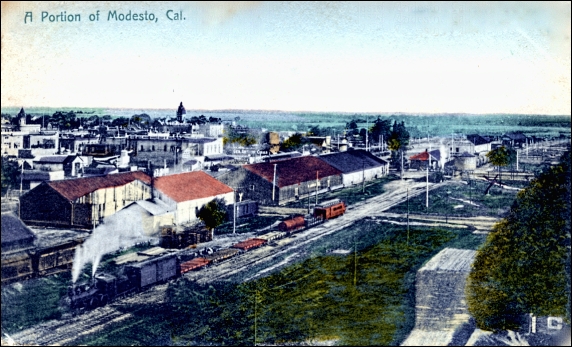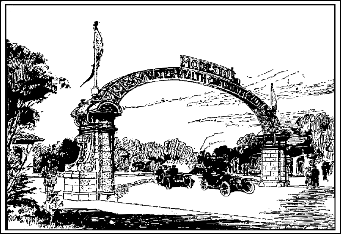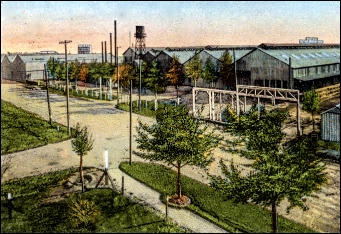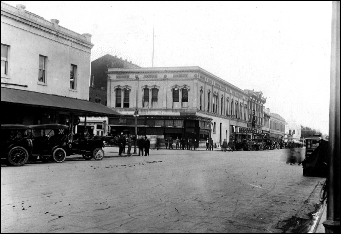| ||||||||||||
Next: 20th Century/Life and Times/Shopping at Schafer's Previous: 20th Century/Prosperous Growth | ||||||||||||
Coming of Age Modesto was first chartered as a "city of the fifth class (under 4,000 population) on August 1, 1884. The incorporation of the city resulted in law and order being brought to what, up to that time, had been a wild western town. By the new century, after the depression of the 1890s, Modesto began to blossom again with growth and prosperity. By 1910, work began on a new charter to revise the governmental structure of the growing community. Tinkham reflects on the new charter in his "History of Stanislaus County" (1921): After twenty-six years of [political] party city government, during which time the saloons and gamblers dominated every election, the citizens resolved to try what was known as the commission form of government . . . The charter, which was ratified by the voters September 10, 1910, provided for the election of a mayor and four trustees. A board of educaiton, five in number, was also elected by the citizen voters. Additionally, the new government could "purchase land for any public purpose for buildings, parks, playgrounds, theaters, art gallery, swimming pools, in fact, anything desirable or useful for the public, and erect buildings thereon." Modesto also took a first step into a totally new realm when it included in the charter the possiblity of creating a city-owned airfield. (This was 1910, seven years after the Wright Flyer had flown at Kitty Hawk). Thus Modesto was the first city in the nation to recognize the possiblities inherent in the future of flight. With a new form of city government in place and new city officials elected on June 5, 1911, the city of Modesto entered a period that marked phenomenal growth in the downtown core, along a great population increase of 94% for Stanislaus County and 129% for Modesto between the years of 1911 and 1921. The city was well-prepared to weather any calamity including a World War and the Spanish flu pandemic of the teens. | ||
| |||||




